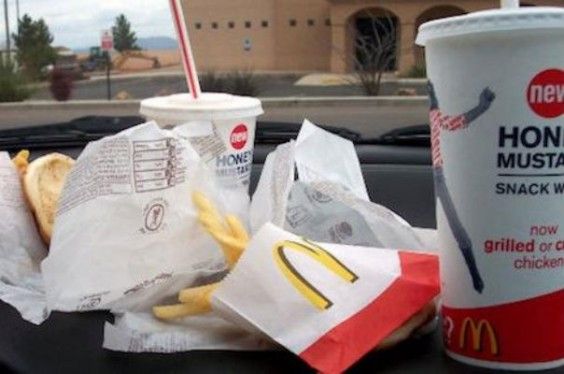Two all-beef patties, special sauce, lettuce, cheese, pickles, and onions on a sesame seed bun may not sound like your idea of a “wholesome dinner,” but isn’t stopping peple from eating it. In a recently released Gallup poll, eight in 10 Americans reported eating at a fast-food restaurant at least once a month. Only four percent of respondents said they never, ever eat fast-food fare. But here’s the catch: the main survey question didn’t define what counts as “fast-food” — so what do these results really tell us?
Why it Matters
This year’s annual Consumption poll, conducted July 10-14, suggests our country is still dependent on (or at least has frequent hankerings for) fast-food. Of the 2,027 adults surveyed, 88 percent reported eating at a fast-food restaurant — including drive-thru, take-out, and sit-down meals — at least once or twice a month.
Even though fast-food consumption has declined slightly since the same poll was conducted in 2006, Americans continue to pull up to the drive-through window. But while some news outlets may have readers shaking in their boots over Gallup’s findings, much of the recent coverage fails to mention that the respondents were not given a clear-cut definition of what counts as “fast-food” when answering the survey. So what about that morning coffee from Starbucks, or the Subway footlong you ate for lunch last Tuesday? Do those count as fast-food?
The answer is sort of unsatisfying. The report itself doesn’t mention a definition, so we contacted Gallup to clarify. What restaurants constitute as fast-food was entirely up to the respondent. Some individuals may consider Starbucks or Panera fast-food, but others may only consider greasy-burger-selling, milk shake-serving joints part of the category.
Is it Legit
Yes and no. Even without an obvious definition of fast-food, the results of this poll demonstrate that a large percentage of Americans are frequently eating outside the home and choosing convenience foods from coffee and salads to the naughty stuff that shall not be named. Fast-food consumption has been linked to weight gain and insulin resistance, two major risk factors for type 2 diabetes
Are you a fast-food afficionado? Do you consider a daily coffee-run fast? Weigh in below and let us know if Chipotle and Starbucks count.

